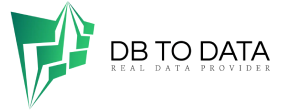A few days ago, Congonhas Airport in São Paulo had its activities paralyzed for a few hours due to a drone.
The drone was flying over the airport runways and preventing planes from landing and taking off.
Imagine, for example, that you, coincidentally, are developing a new device to block drones in areas such as airports, prisons, etc. This is a new product.
After creating your product and resolving patent issues, your next step is to put it on the market, for sale. However, we know very little about your new product.
Your big challenge then is to make the product known, convince people to buy it and make them remember when they have problems.
From the perspective of Advertising and Marketing studies , you must deal with one of the 4P’s: the P of promotion in marketing.
The 4Ps of marketing are: Product, Price, Place and Promotion. These 4Ps are also known as the Marketing Mix.
These are the four basic pillars of any marketing strategy and, when balanced, they influence the conquest of the public.
Today, however, we are going to present to you in depth one of these 4P’s: the P for promotion.
Some Advertising and Marketing scholars, such as McCarthy and Perreault, define promotion as the action of transmitting information between the seller and potential buyers or other members of the channel to influence their attitudes and behaviors.
Other scholars, in turn, such as Stanton, Etzel and Walker, define promotion as all the personal and impersonal colors of a salesperson to the sales representative to inform, persuade and remind a target audience.
The fact is that promotion refers to communication with the specific objective of informing, persuading and reminding a target audience.
So what is the purpose of promotion in marketing?
Promotion is a marketing tool that seeks to influence people’s behavior and attitudes in favor of the product or service offered by a company.
Therefore, promotion serves to give strength to your product or service , making it known, convincing and unforgettable.
Subscribe to the newsletter Leave your email!
Main promotional tools in marketing
To achieve the specific objectives of informing, persuading and reminding, promotion has its own strategic tools. These tools are:
1. Advertising
It refers to any form of presentation and promotion of ideas, goods or services. Through advertising, you can inform, publicize, persuade or stimulate the consumption of the product or service.
You can also enable consumers to remember your product or service through impersonal means.
The most common advertising channels are: TV, radio, internet or print ads.
For the adoption of advertising channels , it is important to follow these 5 steps for efficient decision making:
- Define objectives (What am I looking for through advertising?)
- Decide on the budget (How much am I willing to spend on advertising?)
- Message adoption (What message do I want to convey through advertising?).
- Decision on the media to be used (What is the reach, frequency and impact I am seeking for my advertising?).
- Evaluation (Did the advertising strategies adopted achieve my objective?)
2. Sales Promotion or Merchandising
Sales promotion refers to a set of techniques, incentives or activities to stimulate public attendance and maximize the purchase or sale of a product or service.
The main forms of merchandising are: setting up tasting stands, giving away promotional items that carry the company’s logo or brand such as:
- T-shirts,
- caps,
- key chains,
- product exhibition fairs,
- contests,
- raffles,
- games,
- raffles
- well decorated strategic places,
- promotional packages,
- promotions at points of sale,
- etc
Sales promotion can also be of 3 types, according to the Business Promotion blog:
- Trade Promotion: aims to gain the support of the reseller and increase their desire to sell.
- Sales force promotion: aims to stimulate the sales force and achieve more effective results in the group’s sales colours.
- Promotion to establish a franchise with the consumer: aims to promote the positioning of the product and a sales message in the deal.
3. Events and Experiences
Through events you can make your product or service known and offer the consumer the opportunity to be in contact with and experience the product or service.
The most strategic events of this promotional tool in marketing are: art exhibitions, factory visits, company museums, sporting events and street activities.
These contents may also interest you:
Who are brand ambassadors and why they can help you sell more?
Discover how to execute a Field Marketing strategy
Network Marketing: How This Brand Strategy Works
4. Personal Selling
Personal selling is a marketing promotion strategy whereby you promote a product or service through direct, personal (“face-to-face”) interaction between a salesperson and an individual consumer.
To adopt the personal sales strategy it is important to follow these steps:
- think about potential customers,
- rank potential customers in order of importance,
- gather information about potential customers and plan how to approach them,
- introduce yourself to potential clients,
- present the product to potential customers and plan with good arguments,
- doing business and closing the sale,
- and keep in touch with the customer to follow up.
The main personal selling strategies are: incentive programs, sales representations, samples, sales meetings and trade shows.
5. Direct Marketing
Direct marketing allows you to promote your product or service to an individual consumer through means that allow you to communicate directly with that consumer.
This promotional strategy allows for greater adaptability of the product or service to the needs or interests of the consumer.
The main direct marketing channels are:
- e-mail,
- Internet,
- telemarketing,
- mail,
- online shopping.
Since we have just presented some traditional types of Marketing, we take this opportunity to invite you to read our complete guide on the subject. Download it for free to read after this article!
Complete Marketing Guide!
Download it for free to learn how to create your strategy
6. Public relations
Public relations are important for your company’s image. They are a set of actions whose purpose is to create and maintain a good image of your product or service in the eyes of the public and your employees.
This is one of the least talked about promotional tools, but it is the one that has the most impact when promoting preference for a product or service.
The main mechanisms for maintaining public relations are: press releases, donations, community relations, participating in and supporting cultural and sporting events.
Strategies and techniques for promotion in marketing
Promotion in marketing requires a series of marketing techniques to achieve specific objectives with diversified stimuli in a given time.
The main objective is to offer an incentive to the consumer so that he or she is encouraged to buy a certain product or service, increasing the company’s sales.
But for that to happen effectively, we need to develop strategies and techniques to make the promotion work. Let’s now look at some of these types:
1. Events
It is very important to be creative at this time, since this type of event can be carried out in many places.
2. Contests
It is a marketing classic that still has effective results, since it requires the direct participation of people.
3. Loyalty programs
The client is the central axis of the professional and commercial strategy, where the program makes the person part of a select group of the company, which generates a type of importance for the client.
4. Economic promotions
This includes all promotions that have some type of financial reward: discounts, vouchers or coupons, for example.
5. Product promotions
These are promotions that directly attract the oman mobile database product: Delivery of free samples, increased delivery of the product at the same price, tastings, gifts, etc.
6. Social networks
It is a basic tool for everyone today, as it is free or low cost. In addition, it is of little use and has great appeal. But here more is required than just publishing and hoping it reaches the customer. You have to develop strategies that help your business reach the right customers.
7. Email campaigns
Having a clear idea of good email marketing (where the email is well explored, knowing which clients to reach and the best way to do it), we select what best attracts the attention of the clients, taking into account our needs and applying it when sending the emails.
Ebook: Email Marketing Campaigns
Leave your email and get the complete guide!
8. Direct mail
This strategy is in line with the previous one, but it is obsolete. Keep in mind that this strategy will not always reach the person who is looking for your company.
9. Be nice
It’s not enough to publish a good text or 10 tips for shy founders add a nice image: If you ignore everything, any effort you make can go down the drain. If a client comes to you with a question, answer them.
Make an effort to respond to everyone, one by one, in a friendly and respectful manner. It is not very effective to focus only on quantity and not on quality.
It is important to consider what type of strategy you want for what type of development. Within the strategies above, we can have the following divisions:
Boosting strategies
It is about encouraging people in charge of selling the product to do so in the best possible way.
Attraction strategy
Different from the previous strategy, in this one the objective is the consumer of the service or product.
Hybrid or combined strategy
This strategy combines elements of both push and pull strategies. That is, gifts will be given to both sellers and end consumers.
We hope that these tips have been of great value belgium numbers in promoting your product or service. To learn more about the other 3P’s of marketing, visit the following article: The 4P’s of the marketing mix .

